A gas is enclosed in a cylinder with a movable frictionless piston. Its initial thermodynamic state at pressure Pi=105 Pa and volume Vi=10−3m3 changes to a final state at Pf=(1/32)×105PaandVf=8×10−3m3 in an adiabatic quasi-static process, such that P3V3=constant. Consider another thermodynamic process that brings the system form the same initial state to the same final state in two steps: an isobaric expansion at Pi followed by an isochoric (isovolumetric ) process at volume Vr. The amount of heat supplied to the system i the two-step process is approximately
112J
294J
588J
813J
The correct Answer is:C
To solve the problem step-by-step, we will follow the thermodynamic processes described in the question.
Step 1: Understand the Initial and Final States
- Initial State:
- Pressure, Pi=105Pa
- Volume, Vi=10−3m3
- Final State:
- Pressure, Pf=132×105Pa=3.125×104Pa
- Volume, Vf=8×10−3m3
Step 2: Identify the Processes
We need to analyze two processes:
1. An adiabatic process where P3V5=constant.
2. A two-step process consisting of:
- An isobaric expansion at Pi.
- An isochoric process at volume Vr.
Step 3: Calculate Work Done in the Adiabatic Process
Using the formula for work done in an adiabatic process:
W=PfVf−PiVi1−γ
where γ=53.
Substituting the values:
- Pf=3.125×104Pa
- Vf=8×10−3m3
- Pi=105Pa
- Vi=10−3m3
Calculating:
W=(3.125×104×8×10−3)−(105×10−3)1−53
W=(250−100)−23=150−23=−112.5J
Step 4: Change in Internal Energy
For an adiabatic process, the change in internal energy ΔU is equal to the negative of the work done:
ΔU=−W=112.5J
Step 5: Analyze the Two-Step Process
1. Isobaric Process:
- Work done W1=PiΔV
- ΔV=Vf−Vi=8×10−3−10−3=7×10−3m3
- W1=105×7×10−3=700J
2. Isochoric Process:
- Work done W2=0 (since volume does not change).
Step 6: Apply the First Law of Thermodynamics
Using the first law of thermodynamics:
Qnet=Wnet+ΔU
Where:
- Wnet=W1+W2=700+0=700J
- ΔU=112.5J
Thus:
Qnet=700+112.5=812.5J
Step 7: Final Calculation
The total amount of heat supplied to the system in the two-step process is approximately:
Qnet≈812.5J
Conclusion
The closest option to our calculated value is 588J, which indicates a possible error in the interpretation of the problem or the options provided.
- Initial State:
- Pressure, Pi=105Pa
- Volume, Vi=10−3m3
- Pressure, Pf=132×105Pa=3.125×104Pa
- Volume, Vf=8×10−3m3
We need to analyze two processes:
1. An adiabatic process where P3V5=constant.
2. A two-step process consisting of:
- An isobaric expansion at Pi.
- An isochoric process at volume Vr.
Using the formula for work done in an adiabatic process:
W=PfVf−PiVi1−γ
where γ=53.
- Pf=3.125×104Pa
- Vf=8×10−3m3
- Pi=105Pa
- Vi=10−3m3
W=(3.125×104×8×10−3)−(105×10−3)1−53
W=(250−100)−23=150−23=−112.5J
For an adiabatic process, the change in internal energy ΔU is equal to the negative of the work done:
ΔU=−W=112.5J
1. Isobaric Process:
- Work done W1=PiΔV
- ΔV=Vf−Vi=8×10−3−10−3=7×10−3m3
- W1=105×7×10−3=700J
- Work done W2=0 (since volume does not change).
Using the first law of thermodynamics:
Qnet=Wnet+ΔU
Where:
- Wnet=W1+W2=700+0=700J
- ΔU=112.5J
Qnet=700+112.5=812.5J
The total amount of heat supplied to the system in the two-step process is approximately:
Qnet≈812.5J
The closest option to our calculated value is 588J, which indicates a possible error in the interpretation of the problem or the options provided.
Topper's Solved these Questions
- BOOK - VMC MODULES ENGLISHCHAPTER - GASEOUS STATE & THERMODYNAMICSEXERCISE - JEE MAIN (ARCHIVE )81videos
GASEOUS STATE & THERMODYNAMICS
- BOOK - VMC MODULES ENGLISHCHAPTER - ENERGY & MOMENTUMEXERCISE - JEE ADVANCE (ARCHIVE) - TRUE/FALSE TYPE1videos
ENERGY & MOMENTUM
- BOOK - VMC MODULES ENGLISHCHAPTER - GRAVITATIONEXERCISE - JEE Advance (Archive) TRUE/FALSE1videos
GRAVITATION
Similar Questions
A gas take part in two thermal processes in which it is heated from the same initial state to the same final temperature. The processes are shown on the P−V diagram by straight lines 1→3 and 1→2
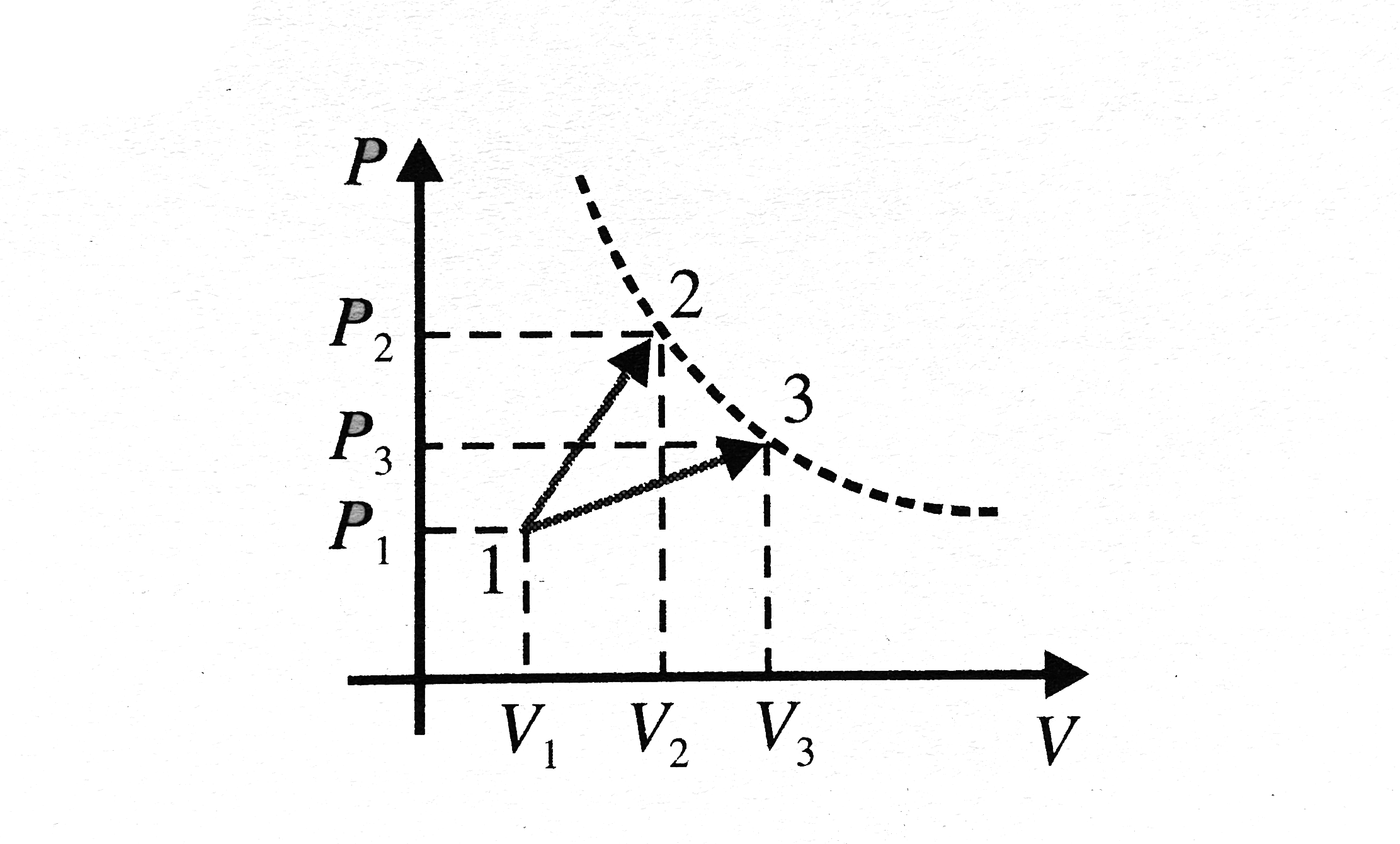 View Solution
View SolutionA gas take part in two thermal processes in which it is heated from the same initial state to the same final temperature. The processes are shown on the P−V diagram by straight lines 1→3 and 1→2
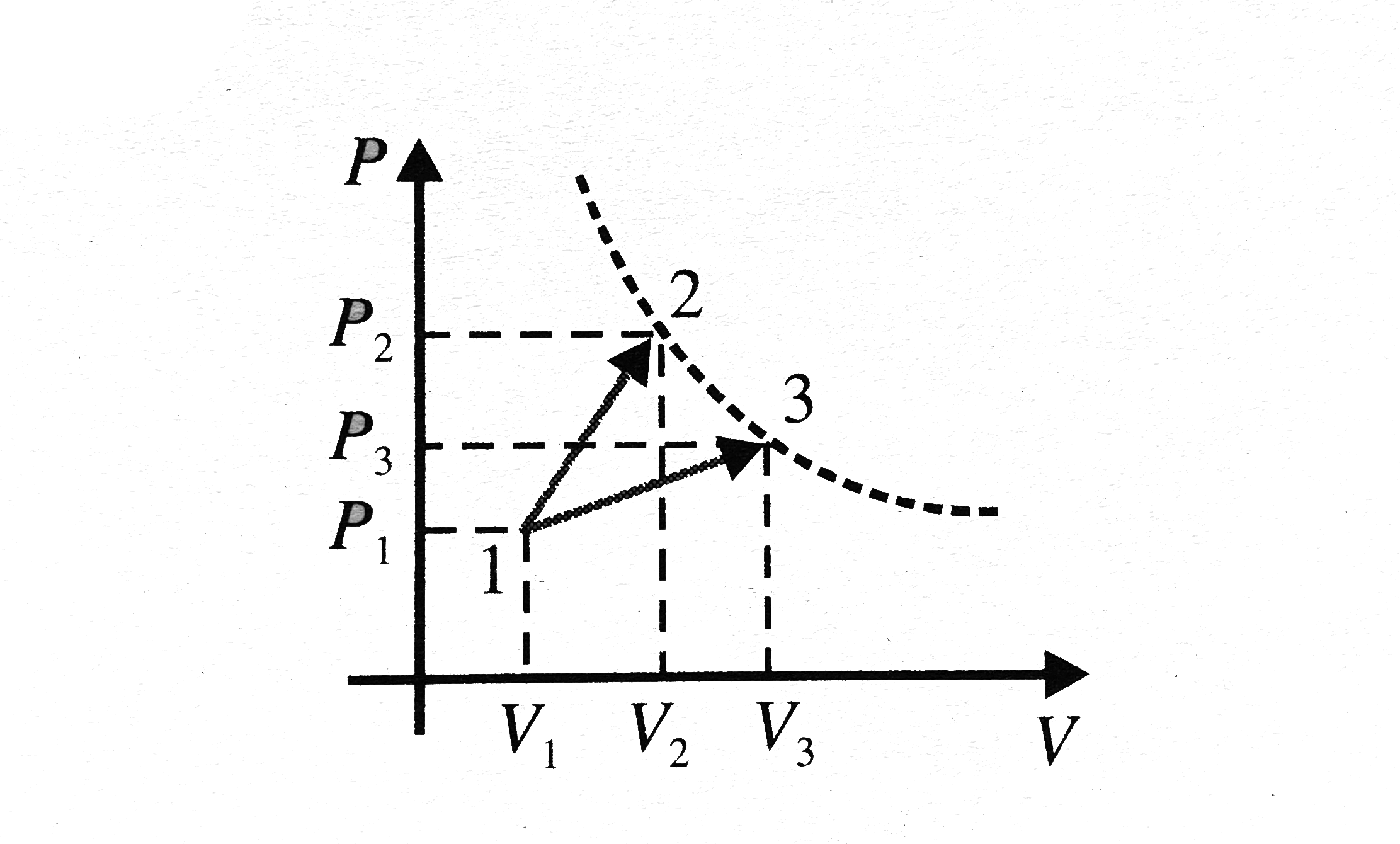 View Solution
View Solution
Knowledge Check
- Question 1 - Select One
An ideal gas undergoes isothermal process from some initial state i to final state f. Choose the correct alternatives.
A1.dU=dQB2. dU=-dWC3. dU=0D4. dU=dW - Question 2 - Select One
One mole of an ideal gas goes from an initial state A to final state B via two processs : It first undergoes isothermal expansion from volume V to 3V and then its volume is reduced from 3V to V at constant pressure. The correct P−V diagram representing the two process in (figure)
A B
B C
C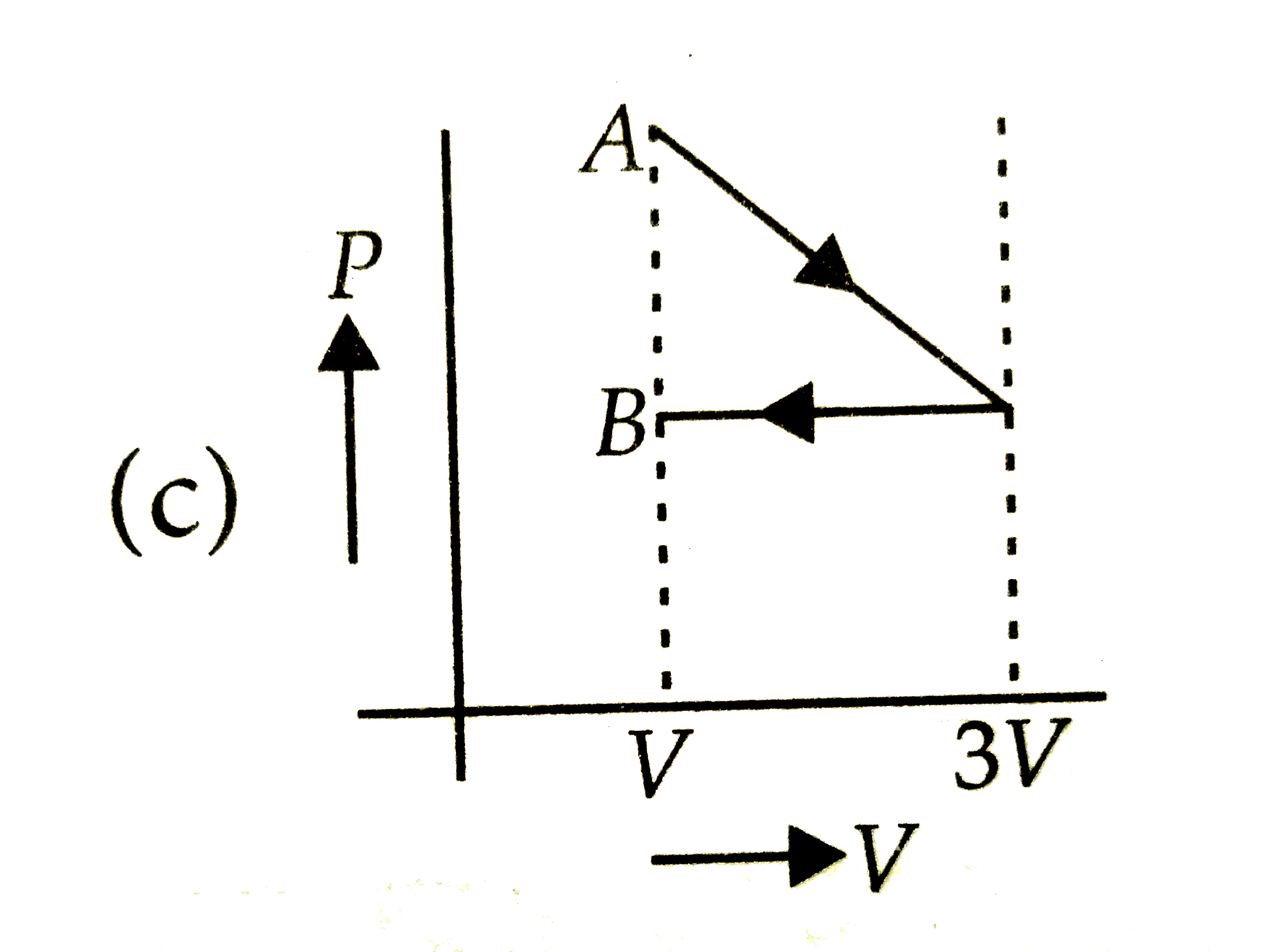 D
D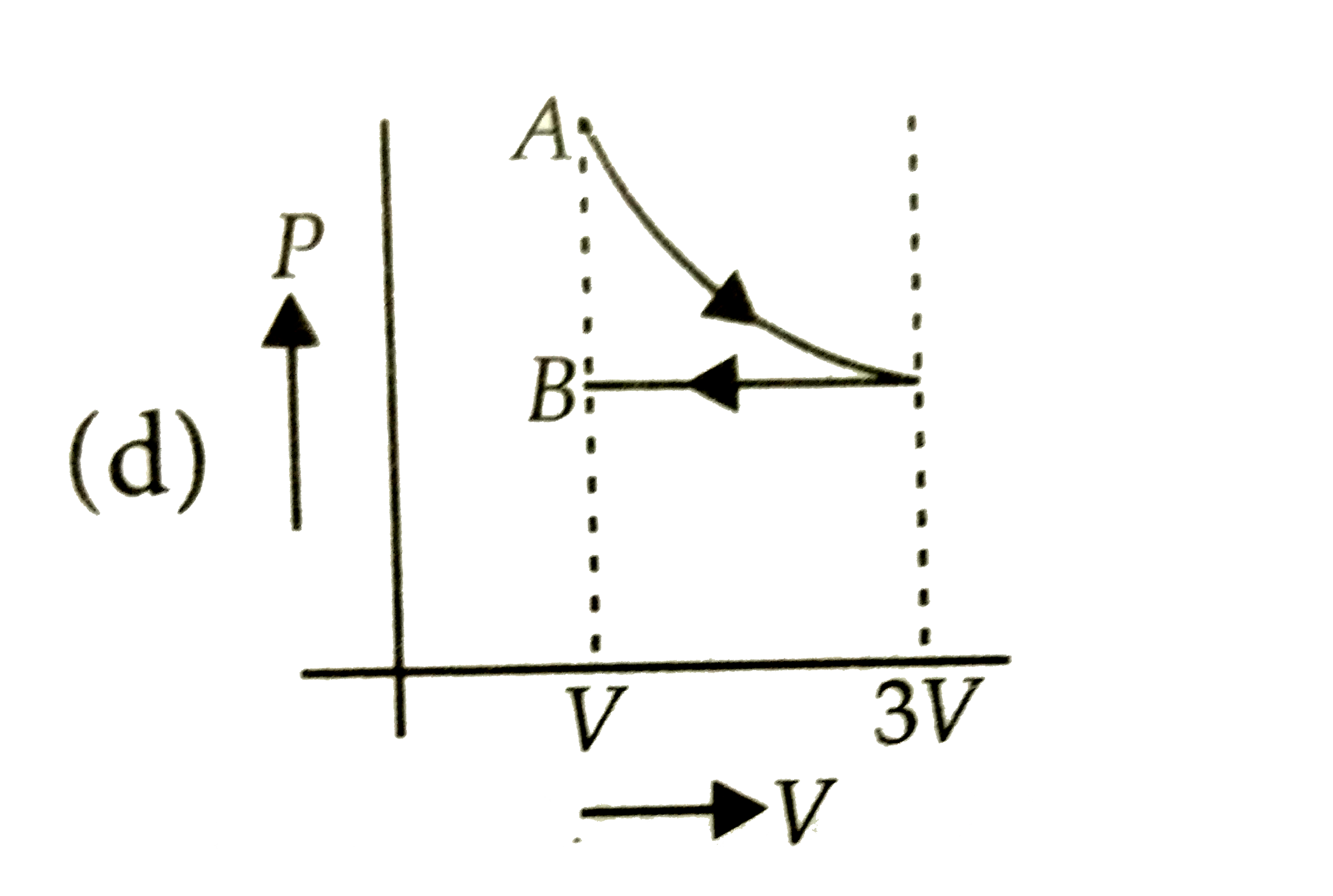
- Question 3 - Select One
An ideal gas undergoes for different processes from the same initial state (figure). Four processes are adiabatic, isothermal, isobaric and isochoric. Out of 1, 2, 3 and 4 which one is adiabatic ?
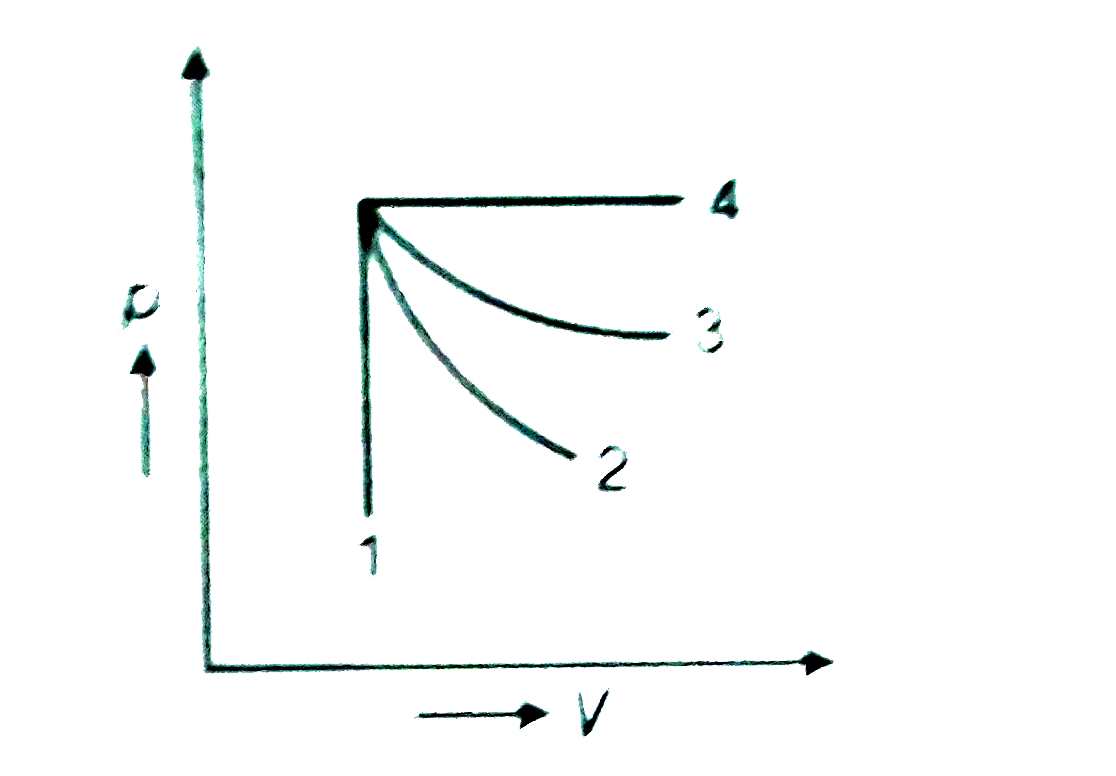 A4B3C2D1
A4B3C2D1
An idel gas undrgoes isothermal process from some initial state i to final state f. Choose the correct alternatives.
View SolutionAn ideal gas undergoes for different processes from the same initial state (figure). Four processes are adiabatic, isothermal, isobaric and isochoric. Out of 1, 2, 3 and 4 which one is adiabatic ?
 View Solution
View SolutionA thermodynamic system consists of a cylinder-piston attangement with ideal gas in it. It goes from the state i to the state f as shwon in the figure. The work done by gas during the process is
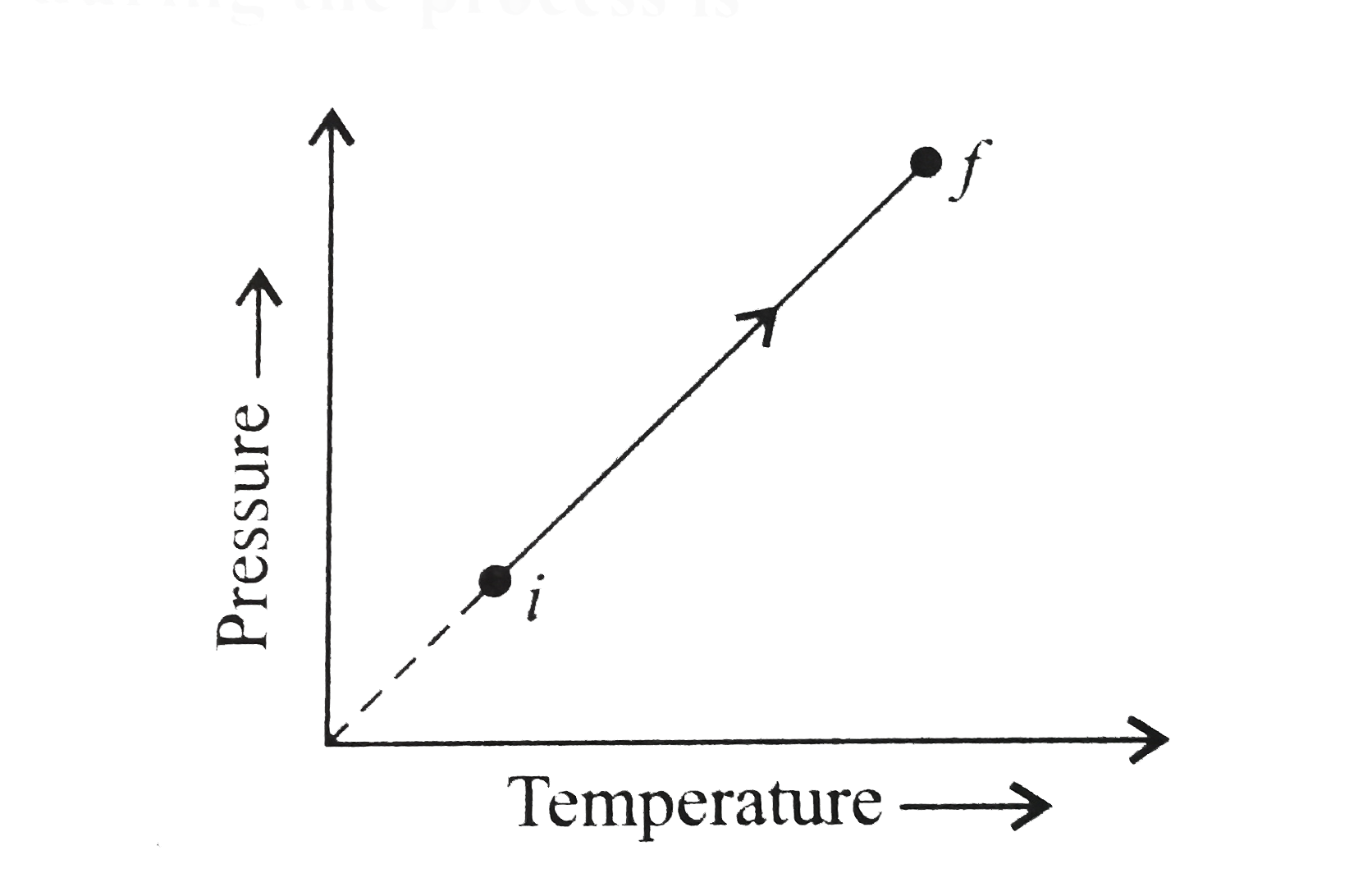 View Solution
View SolutionConsider two processes on a system as shown in figure.
The volumes in the initial states are the same in the two processes and the volume in the final states are also the same.Let ΔW1 and ΔW2 be the work done by the system in the processes A and B respectively.
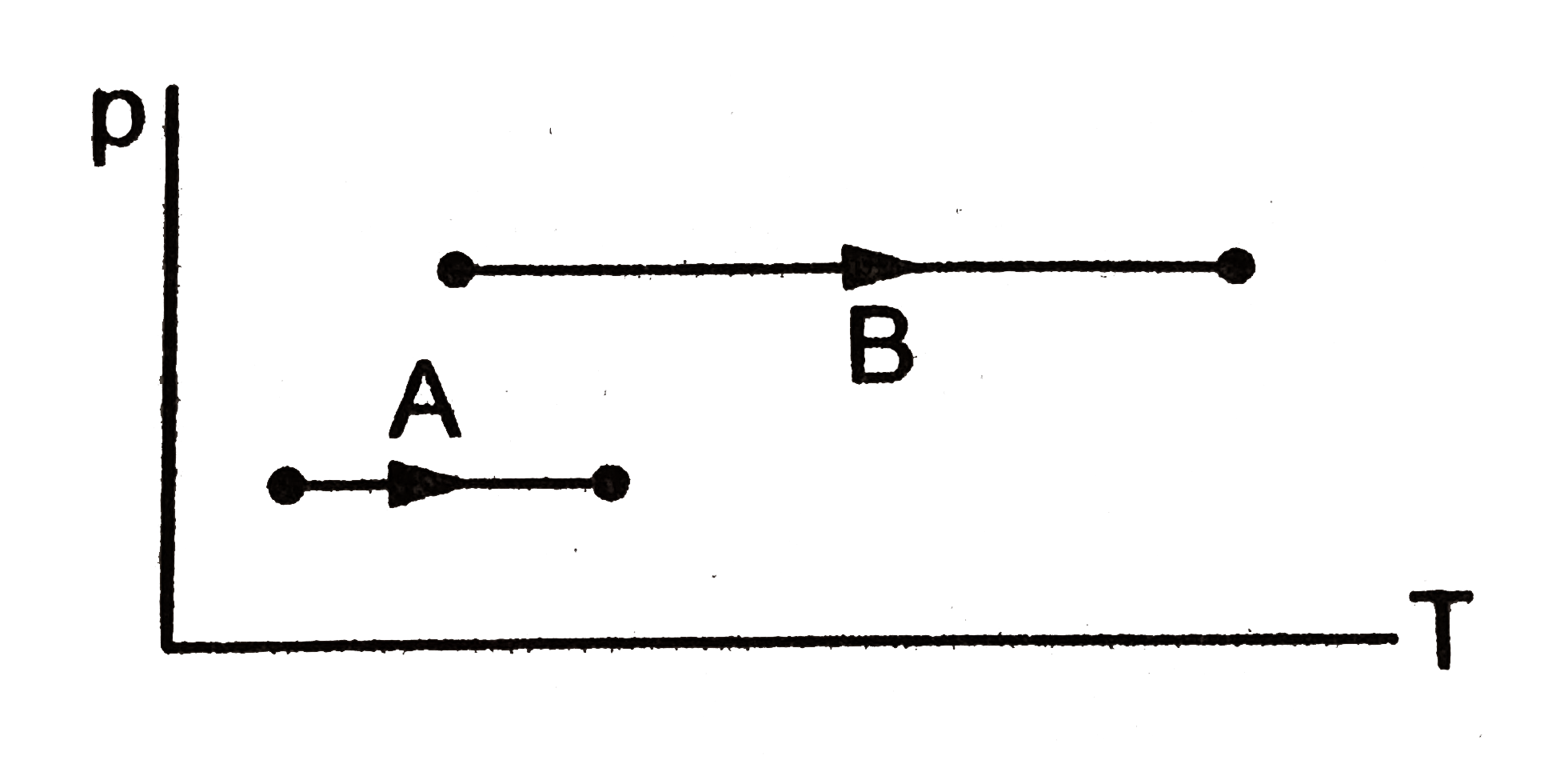 View Solution
View SolutionConsider two processes on a system as shown in figure.
The volumes in the initial states are the same in the two processes and the volume in the final states are also the same.Let ΔW1 and ΔW2 be the work done by the system in the processes A and B respectively.
 View Solution
View Solution

